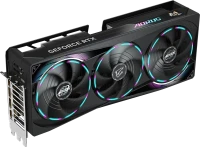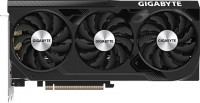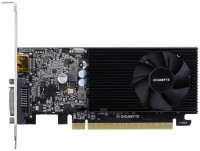Graphics Cards Gigabyte series Aero
prices on 9 modelsGigabyte Aero
Unlike most Gigabyte products, which are designed purely for gamers, the AERO line of graphics cards is more aimed at creative industry workers - artists, VFX specialists, game developers and other professionals who need a powerful or extremely powerful GPU to work effectively. To emphasize this feature, the protective cover and fans were painted in pure white, more video ports were added to the back panel, and a neat RGB Fusion addressable logo was placed on the assembly on the case.
 |
From a technical point of view, AERO video cards largely repeat the models of the Gaming series: for cooling, a proprietary WINDFORCE cooling system is used with three air coolers with asynchronous blades that cover a massive metal radiator with a pack of composite heat-conducting pipes and additional screen cooling. But compact modifications with one or two coolers are not found in the AERO series. With a light load on the GPU, the cooling system switches to a quiet semi-passive silent mode of operation, an important part of which is graphene ball bearing grease.
Considering that the AERO series was launched in 2022, it is not surprising that NVIDIA's 4000-series video accelerators based on Ada Lovelace (5 nm) chips dominate the range of the series. Moreover, in the series there are not only top-end RTX 4080 and RTX 4090, which were positioned as GPUs for creatives, but also simpler gaming video accelerators RTX 4050, 4060 and 4070, designed to solve more tasks that do not require 16 or 24 GB of video memory. An important feature of this generation is dedicated next-generation cores, which are responsible for hardware ray tracing and artificial DLSS scaling, implemented through complex AI algorithms. In addition, the user is provided with a full range of software and hardware solutions from NVIDIA, including NVIDIA Broadcast, NVIDIA Reflex and the NVIDIA Studio package for working with three-dimensional graphics, lighting and animations.






